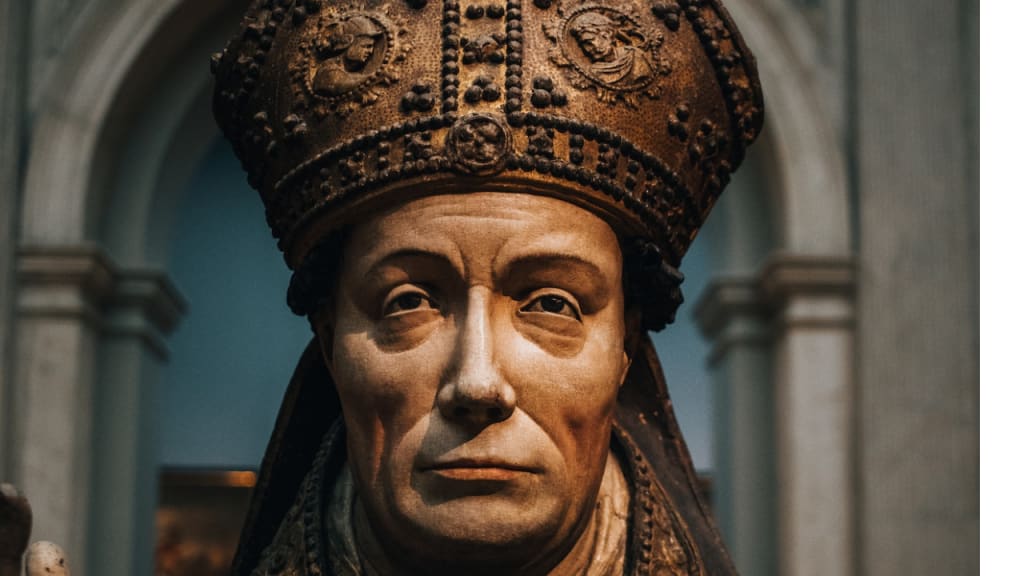A SYMBOL OF UNITY IN THE CHURCH DIVIDED
Pope vs Pope vs Pope

For very nearly two centuries, the Pope has been a figure of preeminent profound expert for Catholics all over the planet.
Be that as it may, in the late fourteenth hundred years, Catholics ended up with not one, not two, yet three popes. Where did this plenty of popes come from? Also, who among them was the real deal? The starting points of this ecclesiastical problem started in 1296, at the point when France's The best Philip IV chose to increase government rates on the Congregation. Given the ministry's political power, this irritated Pope Boniface VIII, driving him to compose the "Unam Sanctam":a revolutionary declaration affirming the Pope's complete matchless quality over natural rulers. Be that as it may, Lord Philip struck back. He proclaimed Boniface a blasphemer and attempted to have him captured in a brutal strike. Boniface endure the attack, yet passed on before long. What's more, following a brief replacement, Pope Forebearing V was chosen in 1305.A French negotiator looking for harmony in the conflict among Britain and his country, Lenient needed to remain nearby the contention and departure the requests of Rome. So in 1309, he moved the seat of the papacy to Avignon, a city near France yet claimed by a vassal of the Congregation. The papacy stayed here for the conditions of seven popes until the dominant Pope at long last gotten back to Italy in 1376. Yet, only a while after his appearance, he unexpectedly passed on. This stunning improvement implied another pope must be chosen right away and in Rome, where there hadn't been an ecclesiastical political decision in more than 70 years. The not entirely set in stone to choose one of their own and reestablish Rome as the seat of Western Christian world. Nearby authorities compelled cardinals to pick an Italian pope, while boisterous hordes attacked the gathering and pillaged the ecclesiastical wine basement. In the midst of this disorder, the cardinals chose the Neapolitan Ecclesiastical overseer of Bari for become Pope Metropolitan VI. At first, Metropolitan was viewed as a protected decision. In any case, he immediately ended up being a reformer who tried to restrict the cardinal's funds. Frantic to keep up with their extravagant ways of life, the cardinals announced the new political decision ill-conceived, since it was chosen under tension from the Roman horde. They decried Metropolitan as a usurper and held another conference to choose Pope Forgiving VII. Lenient endeavored to expel Metropolitan, be that as it may, he would not perceive the power of Lenient or his insatiable cardinals. Metropolitan named new cardinals to his court and settled in himself in Rome while Lenient and his allies got back to Avignon. The split had formally started. Western Christian world currently had two capitals, Avignon and Rome, each with their own Pope and court of cardinals. As popes from each line kicked the bucket, their cardinals selected replacements, proceeding with the emergency for a really long time. This peculiar circumstance didn't affect most customary Catholics, as there were no huge doctrinal parts. All things being equal, the show worked out in the conciliatory domain. European rulers had to pick sides, as the two popes competed for profound and political matchless quality. Just a pope had the position to call an overall chamber to formally determine the issue, and the two sides would not make this stride. So in 1409, a gathering of cardinals from France and Rome assumed control over issues.
They guaranteed that since the two popes were questioned, cardinals reserved the privilege to call a board. What's more, at their get-together these cardinals dismissed the fakers and furthermore, chose another Pope. Tragically, both Avignon's Pope and Rome's Pope wouldn't perceive this gathering. So rather than settling the emergency, the quantity of popes rose to three. This strange plan endured five additional years, until the Gathering of Constance in 1417. Here, the popes from the Roman line and as of late made third line surre ndered and consented to join the congregation under another Pope Martin V. Undisputed, Martin quickly banished the main individual still against him the Pope of Avignon lastly finished the break following 39 years. Today, the congregation's true records say the Roman Line was generally the genuine ecclesiastical power. Yet, paying little heed to how the faction finished, its presence demonstrates that even the individuals who employ the most power can be partitioned. It likewise shows the way that a political and otherworldly emergency could compromise a whole religion, as well as how delicate even the most grounded of foundations can be. The Incomparable Split hangs out in history not just in light of the fact that it was quite possibly the earliest significant occasion to influence the Catholic Church, yet in addition since it stayed a demonstration of our ability to commit errors and gain from them. It showed us that it is feasible to find a split the difference, in any event, when everything appears to be lost. Furthermore, should the Congregation face one more significant emergency later on, we can recall that divisions have been defeated previously.
About the Creator
Michael Omondi
I am an inquisitive person who loves to learn new things. I enjoy exploring new ideas and finding creative solutions to problems. My passions are reading, writing, and travel. I also love interacting with people from different cultures.
Enjoyed the story? Support the Creator.
Subscribe for free to receive all their stories in your feed. You could also pledge your support or give them a one-off tip, letting them know you appreciate their work.






Comments
There are no comments for this story
Be the first to respond and start the conversation.